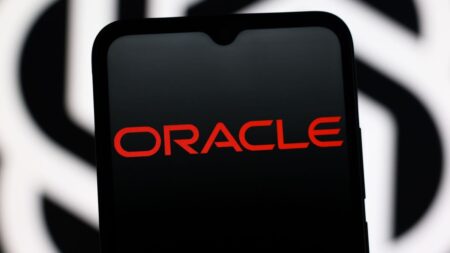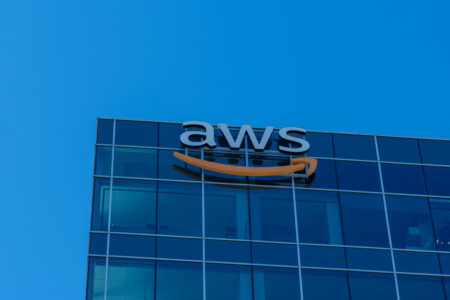
In the world of cloud computing, big names including AWS, Azure, and Google are often perceived like mythical creatures: powerful, omnipresent, and exuding an allure that’s hard to resist. Yet, when it comes to partnerships for managed service providers (MSPs) and systems integrators (SIs), these giants may not always be all that they’re made out to be. In this analysis, I’ll explain why the choice of a behemoth may not necessarily translate to a fairy-tale partnership, and share some solid alternatives that could be a good fit.
One Size Does Not Fit All
With vast arrays of services and offerings, big cloud providers often sell a universal approach. But MSPs and SIs, with their unique requirements, might find that universal approaches, much like attempting to wear an oversized hat, don’t quite fit. They may in fact be better off with a smaller, more fit-to-purpose approach that is available from a smaller provider. This is especially true in industries including healthcare and government, or with niche services, like those used for content delivery.
Sure, the big guys offer these services, too, but they often come up short, especially in areas like the aforementioned content delivery. Let’s compare them to the smaller Cloudflare, which offers a large network of servers that can improve the security, performance, and reliability of anything connected to the internet. Cloudflare also offers a smart content-delivery network with a broad footprint that can help reduce bandwidth costs for delivering static content, saving customers money on their network charges.
Lately, Cloudflare has even been expanding its services at the edge to do more than just keep unchanging copies in cache. Cloudflare Workers lets developers build serverless applications at the network edge, eliminating the need to manage and maintain servers. The Workers product runs arbitrary functions written in JavaScript, Rust, C, or C++, and bills according to how many resources are consumed when it’s running. That’s a product that works both for the customer who needs content management and the partner who needs to deliver the right cloud services. When you couple that with a partner program that’s easy to understand and engage in, you can see why some channel partners prefer working with Cloudflare.
The Complex Dance of Support
Engaging with massive cloud providers often means navigating complex support structures. These structures arose because the providers have often made multiple acquisitions, blended multiple systems, and, in some cases, have systems that could rival the pyramids in age. That makes the big providers costly to work with for many partners. When you add in the lower margins often earned on reselling their services and tools, it can become a financially burdensome equation for the average partner.
Let’s use an example of a support tool from a smaller provider, UpCloud, which offers the “world’s fastest cloud.” UpCloud’s block storage offers superior performance, enough to be called “faster than SSD.” This lowers support calls to partners regarding performance. Plus, UpCloud emphasizes trustworthiness, offering up to 50 times payback for any outage lasting more than five minutes. That is a promise that is meaningful for the partners who are taking first-line support calls when their customers have an issue.
Customization: A Rigid Ballet
Tailoring software from AWS, Azure, or Google might sometimes feel like trying to teach an elephant to pirouette. These platforms, while robust and feature-rich, may not always lend themselves to the nimble adjustments that MSPs and SIs often require. In many cases, the smaller providers can offer more viable options for customization.
While it’s not as small as it once was (now that it has gone public), DigitalOcean continues to target developers with a simple, no-nonsense interface. The DigitalOcean cloud offers a mixture of raw compute power and newer managed services. This allows an easier customization journey for end users and partners.
Pricing: The Cost of Dancing with Giants
It starts with unpredictable costs: From hidden fees to unforeseen spikes in usage, MSPs and SIs may find themselves in a financial maze, particularly with the larger providers. Due to complex pricing models, partners may have to decipher a menu of options in a way that almost requires an advanced degree in “cloudonomics.”
For many IT departments, this complexity can lead to additional work for bill reviews, surprise charges that weren’t budgeted for, and an impact to their financial credibility when the bills come in larger or different than what was originally forecast. Finally, long-term contractual commitments may lead to savings, but they also tether you to a specific provider for longer than you may wish. Since new technology costs can actually fall, this can be an issue for some as they look to pivot to the latest options to save money.
Smaller providers often offer less complex and less costly tools. Let’s use an example of Backblaze for backup: its service is 70% lower than AWS service for the same basic functionality and their partner program is easier to use and more rewarding. That’s why many channel partners choose to work with a smaller cloud provider.
Competition or Collaboration?
The giants often provide services that overlap with those offered by MSPs and SIs or refuse to let the partner sell to some large enterprise accounts. In fact, when the big providers focus on a particular niche, it can put MSPs and SIs in direct competition with their supposed partners. And since partnering with a giant means sharing insights, strategies, and sometimes even customers, this is a risky proposition.
In contrast, many smaller providers choose not to compete with the channel — in fact, in many instances, they sell 100% through the channel, eliminating the conflict issue completely. As a channel partner, you might want to check if you’re dancing the tango or engaging in a wrestling match.
Conclusion
Choosing a provider in the vast cloud computing market is no walk in the park. While the allure of giants like AWS, Azure, and Google is undeniable, the complex pricing and potential competition can turn a potential partnership into a minefield. Whether it’s navigating labyrinthine pricing models or delicately sidestepping conflicts of interest, MSPs and SIs need to be astute in partner selection.
Gain insight into the way Bob Evans builds and updates the Cloud Wars Top 10 ranking, as well as how C-suite executives use the list to inform strategic cloud purchase decisions. That’s available exclusively through the Acceleration Economy Cloud Wars Top 10 Course.







